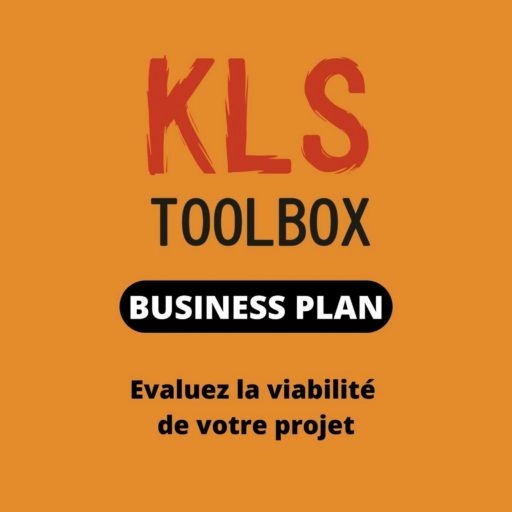THE 4 MAJOR MISTAKES IN FINANCIAL MANAGEMENT
IGNORE FINANCIAL COMMITMENTS

One of the most common mistakes in financial management is toignore financial commitments. These commitments are often rightly considered as future costs, as they have not yet been invoiced. However, it is crucial to take them into account in the financial forecasting processbecause they can have a significant impact on cash flow and actual costs on a financial year.
Impact of unrecorded financial commitments
Ignoring these commitments can lead to an underestimation of future costs and unpleasant budgetary surprises. For example, when making a multi-year service commitment with a supplier, it is important to pay attention to the division between the different years in which the services are provided and to take them into account when drawing up the medium-term budget (MTP= Medium-Term Plan).
A study by McKinsey & Company (2020) points out that companies that do not include financial commitments in their budget forecasts can see their budget accuracy fall by 30%.
Tools for monitoring financial commitments
Depending on the size of your company, monitoring can be done using in-house tools (Excel, etc.) or integrated software for larger structures. Using ERP (Enterprise Resource Planning) systems such as SAP, Oracle, Dynamics365 or others enables financial commitments to be tracked and recorded from the moment they are created. These systems offer specific modules for managing purchases and financial commitments, helping to maintain an accurate view of the company's financial obligations.
Risks of recording expenses when supplier invoices are received
When expenses are only recorded when the supplier invoice is received, the company risks having an incomplete view of its financial situation. This can lead to underestimation of real costs and a lack of precision in budget forecasts.
NOT TO SPREAD FINANCIAL COMMITMENTS OVER THE FINANCIAL YEARS
Financial commitments are an essential element of effective financial management. It is crucial to monitor them properly in order to guarantee an accurate financial forecast.
Consequences of not allocating commitments
Not distributing purchase requisitions (PR) and purchase orders (PO) over the financial years can lead to budgetary surprises and make it more difficult for the company to meet its commitments. This can have an immediate impact on your cash flow requirements.).
A study by Deloitte (2019) shows that companies that spread their financial commitments over several annual financial years see a 25% improvement in the accuracy of their budget forecasts.
Distribution techniques
To avoid this type of error, it is important to allocate the financial commitments over the financial years on the basis of the forecast workload plan by the project or simply contractual deadlines.
Quarterly reviews of financial commitments can help to adjust budget forecasts in line with actual and forecast expenditure, and thus to ensure that you have a good understanding of the company's financial performance in addition to comply with the accounting principle of true and fair view.
CONFUSING PAYMENT WITH RECEIPT
In the financial management of a company, payment is often confused with receipt. However, the payment is a cash flow issuewhile acceptance relates to the actual completion of the goods, services or equipment. It is therefore important to separate these two aspects to get a clear picture of the real costs each year.
| A concrete example | Solution |
| Imagine a company that has received a service in December but didn't pay the bill until January. - Commitment accounting the expenditure was recorded in December. - Cash accounting expenditure is recorded in January. | Training financial and operational managers in these differences can prevent budgeting errors. Regular training workshops on the principles of commitment and cash accounting are recommended. |
Understanding this difference makes it possible to better management of cash flow and real costs.
UNDERESTIMATING COMMUNICATION AND TRAINING FOR OPERATIONAL TEAMS

It is often the case that finance departments consider that they have acquired financial management knowledge and underestimate the need for training and awareness-raising in operational functions.
| Impact of training | Training formats |
| A well-structured financial training programme can transform the way operational teams understand and manage finance. | - Interactive workshops Sessions in small groups to discuss practical cases. - E-learning Online modules enabling employees to learn at their own pace. - Awareness-raising sessions : Regular presentations on key financial concepts. |
For example, a study by PwC (2017) reveals that regular financial training can improve budget accuracy by 15% and reduce financial management errors by 25%.
HOW TO AVOID THESE 4 MISTAKES?
TRAINING AND SUPPORT FOR OPERATIONAL STAFF
There are various types of training available:
- Initial training Introduction to financial concepts for new employees.
- Continuing education : Regular updating of the knowledge of those responsible for managing budgets and orders.
- Specific training Sessions on specific financial tools such as ERP and management rules.
SETTING UP A STRUCTURED BUDGETING PROCESS
- Collecting data Gather all relevant financial information, in particular to plan the purchasing files to be processed.
- Forecast expenditure Estimating future costs based on commitments and historical trends in brief map purchasing expenditure.
- Allocating resources Distribute the budget according to strategic priorities, projects and activities.
TAKING FINANCIAL COMMITMENTS INTO ACCOUNT WHEN MAKING FINANCIAL FORECASTS: Budget and Forecast
Examples of dynamic financial forecasts :
- Quarterly magazine Adjustment of forecasts based on actual expenditure.
- Use of dashboards Real-time monitoring of financial commitments.
RECORD COMMITMENTS AS SOON AS THEY ARE CREATED/CONTRACTED
Some recommended tools:
- ERP Systems such as SAP, Oracle, Dynamics365 and others to track commitments from the moment they are created, i.e. when the requirement is defined.
- Scorecards Tools for viewing commitments in real time (Excel, PowerBI, etc.)
SPREADING FINANCIAL COMMITMENTS OVER THE FINANCIAL YEARS
Here are some specific techniques:
- Analysis of historical trends To forecast future expenditure.
- Business cycle forecasting Adjustments to commitments to take account of seasonal variations or unforeseen events.
EXAMPLES OF HOW TO SEPARATE PAYMENTS AND RECEIPTS
- Example 1 A company that receives a service in December but pays in January. Record the expense in December for accurate accrual accounting.
- Example 2 : Employee training on the differences between payment and receipt for better financial management.
EXPLAIN THE DIFFERENCE BETWEEN PAYMENT AND RECEIPT FOR CLEAN ACCOUNT CLOSURES
Examples of visual management:
- Graphics Comparison of cash flow and expenses incurred.
- Tables Difference between accrual and cash accounting.
XTEP - BEST PRACTICE
| The 4 common mistakes | How to avoid these mistakes |
|---|---|
| Ignoring financial commitments | - Record financial commitments as soon as they are created. - Use ERP systems such as SAP or Oracle to track and record financial commitments. - Train finance managers on the importance of taking commitments into account in budget forecasts. |
| Do not spread financial commitments over annual periods | - Spread the financial commitments over the various financial years. - Carrying out quarterly reviews of financial commitments to adjust budget forecasts. - Use techniques to analyse historical trends and economic cycles to forecast future expenditure. |
| Confusing payment with receipt | - Train financial and operational managers on the differences between payment and receipt. - Record expenditure on receipt of goods or services for accurate commitment accounting. - Use concrete examples and training workshops to clarify these concepts. |
| Underestimating the importance of financial communication and training | - Set up financial training programmes for operational teams. - Organise interactive workshops, e-learning modules and regular awareness-raising sessions. - Encourage open and ongoing communication on financial practices. |
To optimise your financial management and avoid common mistakes, we recommend using the KLS Toolbox, designed to improve budget accuracy and the management of financial commitments. Our experts are also available to support you with customised services, including specific training and tailor-made consultations.
Take the lead and improve your financial skills now! Contact us today for a free consultation.




